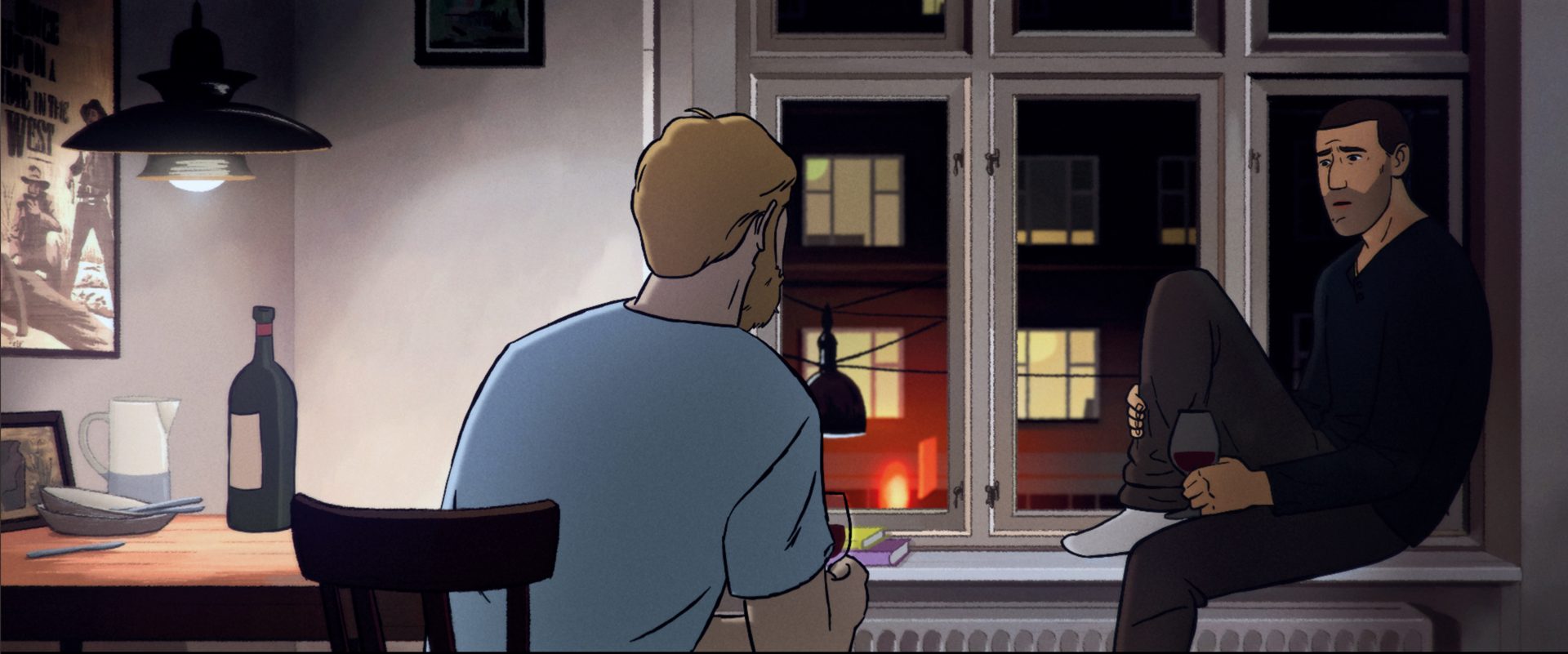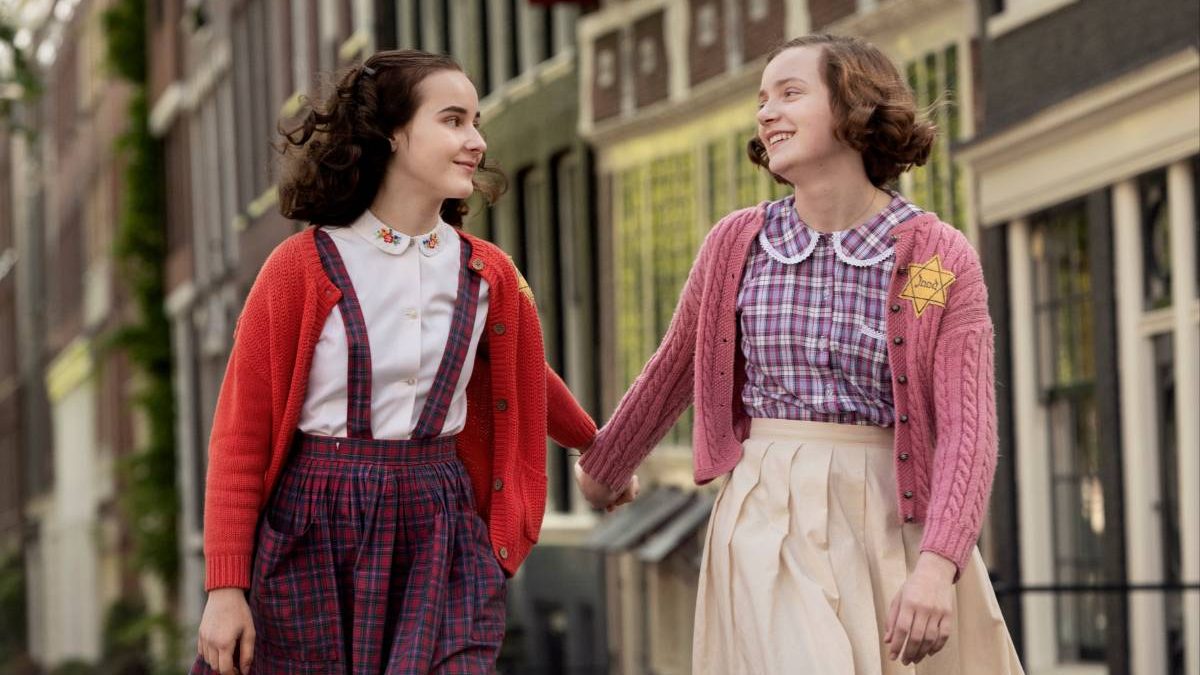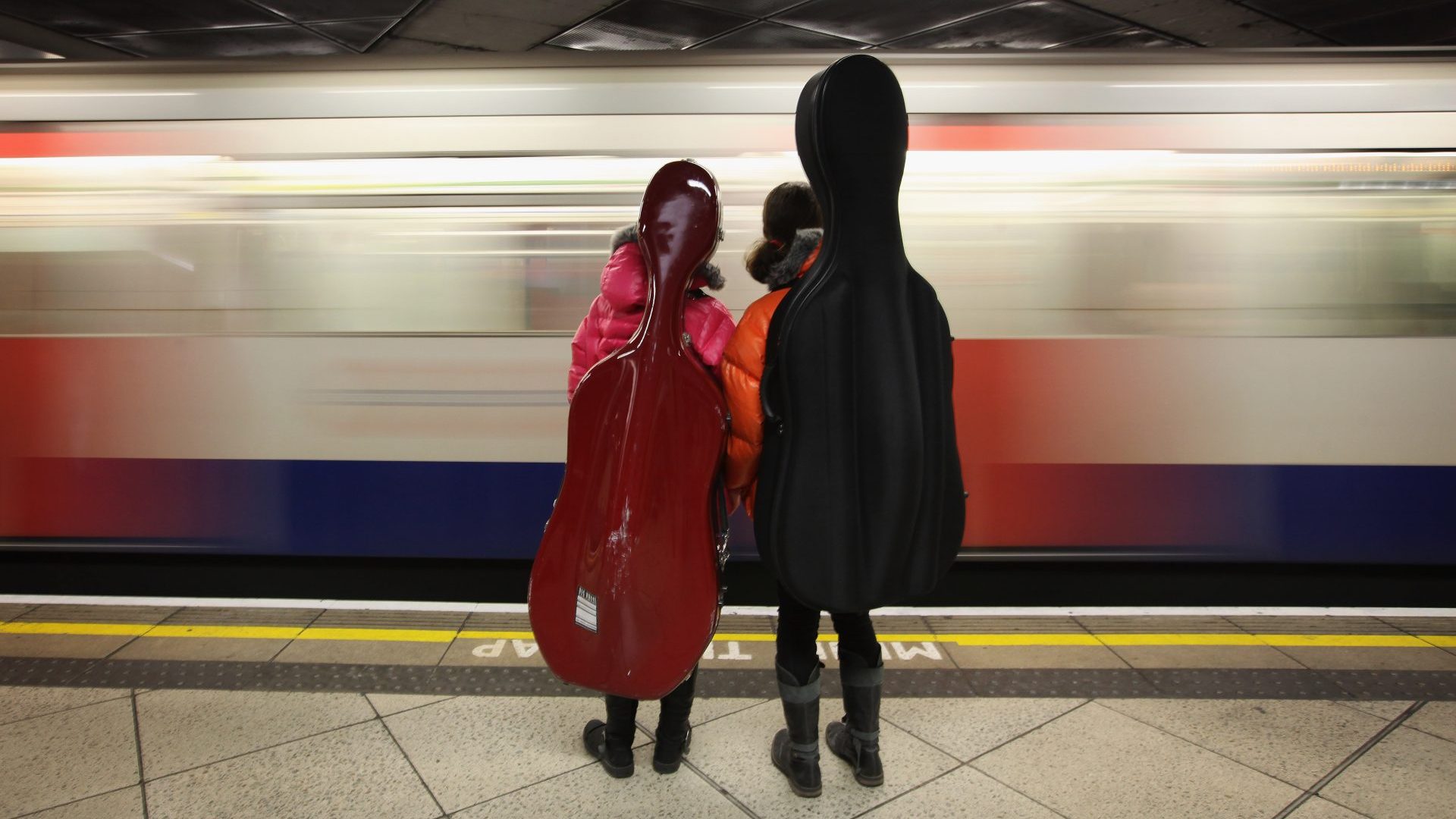Danish director Jonas Poher Rasmussen made history last week when the Oscar nominations were announced in Hollywood, his film Flee scoring an unprecedented hat-trick of nods in the Documentary, Animation and International Film categories.
No movie has ever done this before – but then nobody’s made a movie like Flee before.
Told in a distinctive, graphic animation style, it’s the story of Amin (not his real name), a gay man who, on the eve of his wedding in Copenhagen,
reveals secret, long-buried details of his past life in a confessional interview with his best friend.
The film is both the audio of that interview, which really happened, and the telling, in flashback, of a gripping, often harrowing journey from Kabul in Afghanistan to Moscow and across Europe and the Baltic to find refuge – and a new life and identity – in Sweden and Denmark.
“It’s about a man who has been fleeing for almost all his life,” Rasmussen tells me from his basement office in Copenhagen. “He’d been hiding, running away and now he wants to reveal himself fully and be complete – I think that’s something lots of people around the world can understand. That’s maybe why the film is connecting on so many levels.”
The real Amin is one of Rasmussen’s oldest friends, someone who, he says,
arrived at his school when they were 15 and with whom he felt an instant
rapport for reasons he still can’t fathom. “He only spoke Russian and I
didn’t know he was from Afghanistan originally – maybe he was exotic or
vulnerable or mysterious to me, but we have been very close friends since day one.”
However, says Rasmussen, until they started working together on the interviews that became the main narrative of Flee, the filmmaker had no
idea of the traumatic events of his friend’s young life.
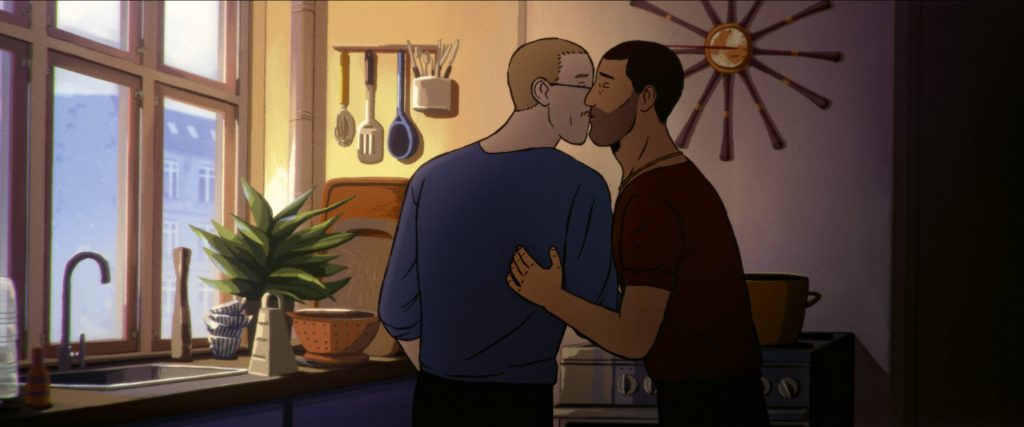
Rasmussen is a radio documentary maker by trade, quite well-known in
Denmark. His unusual interview technique is to get his subjects to lie
down and close their eyes, almost like a therapist. And he did this with Amin, who began to reveal his memories in astonishing and vivid detail.
“If he talked about his house in Kabul, I pushed deeper: what were the plants in the garden, what did it look like, what colour was the room… and all this memory just poured out. You could say, yes, I was shocked to hear my friend, who I thought I knew so well, telling me all this and that I’d never heard it before. I guess he just was not ready to tell it – you can understand, because it is very painful for him to recall it.”
The identity of the real Amin remains, somewhat remarkably, hidden, at his request. I wonder if the awards furore around the film will now push him reluctantly into the limelight? “We want it to be secret, still, even more anonymous I’d say. He just can’t be in the public eye and make small talk about what happened to him. These stories are painful and he told them to me, trusted me with them and he’s glad the story is out there, connecting to all these audiences around the world. But, even if he knows people will be curious, he doesn’t want to be known for the story of his traumas, he’s a lot more than that in real life.”
Of course, the fact that Flee is an animation helps with anonymity – we wouldn’t recognise the real Amin if he sat next to us because he looks nothing like the human being represented on the screen. And even if the series of escapes, scrapes, near-death experiences, separations and beatings
and indignities of his flight don’t apply to all of us, the animation somehow
works to bring us closer to the story.
“I think that behind every face we see there’s a story like this,” says Rasmussen. “The film is really about what is hidden. And yes, it gives a
human face to every refugee and I hope it adds nuance to all the debate
about refugees we are seeing in Europe now.”
Although Jonas and Amin began recording the audio of their interviews in 2013, the refugee crisis of 2015 affected the making of the film greatly, he says. Many refugees arrived in Denmark from Syria and they were regarded with deep mistrust by many, becoming political pawns in a wider debate. “I realised that my friend’s story was clearly so many other people’s story too, and the talk around the refugees was very black and white – I felt that I could add some nuance to the situation. I could show that these people who are refugees now, they don’t need to be in a couple of years, they can settle and start building a life.”
He says Amin was also shocked by the change in attitude that had occurred since his own arrival in the 1990s. “He was allowed to be safe and to stay,” says Rasmussen. “And that led to him becoming the man he is now, very integrated and at home here, but the tone now is very different, it’s a lot
harsher. Refugees arrive now, they’re told they maybe can stay but will get sent back as soon as possible, it’s very temporary and so, of course, they can’t
build on their lives. Why would they work, learn the language, get an education somewhere if they’re going to be thrown out at any moment?”
Of course, the recent upheavals in Afghanistan have now given Flee a headline immediacy, pushing escape from Kabul into the world headlines. Watching the film, you might even think it was made last week, but the
archive news footage and film that occasionally interrupts the animation is very carefully and painstakingly sourced from 1989.
The film is a document of a man’s life, a confessional anchored to true historical events, but it is also a gay story, something Rasmussen says wasn’t originally part of his plans until he realised that sexuality played a big part in Amin’s identity, which is to say, essentially the core of the film.
“He came out to me when he was 17, so I always knew that about him and it was a large part of who he was,” recalls the director. “What I didn’t know was the refugee part. But his family perhaps didn’t know the gay part, so in a sense it’s a double coming-out story – he’s had to hide parts of himself always, that’s what was key, and we needed to have that in there and for Amin the film is full disclosure, you know, with his sexuality and his past, to fully reveal himself to be honest to his fiance and to himself. Getting both stories out there is a big deal for him and audiences are obviously responding to that honesty.”
Homosexuality is of course now very dangerous in Afghanistan. I wonder if, with the film’s historic showing in the Oscar nominations, the news has reached Kabul and if the film might even be seen there.
“As much as we in the West need to be more nuanced about refugees,” says Rasmussen, “there are still many places in the world where it’s not OK to be gay.”
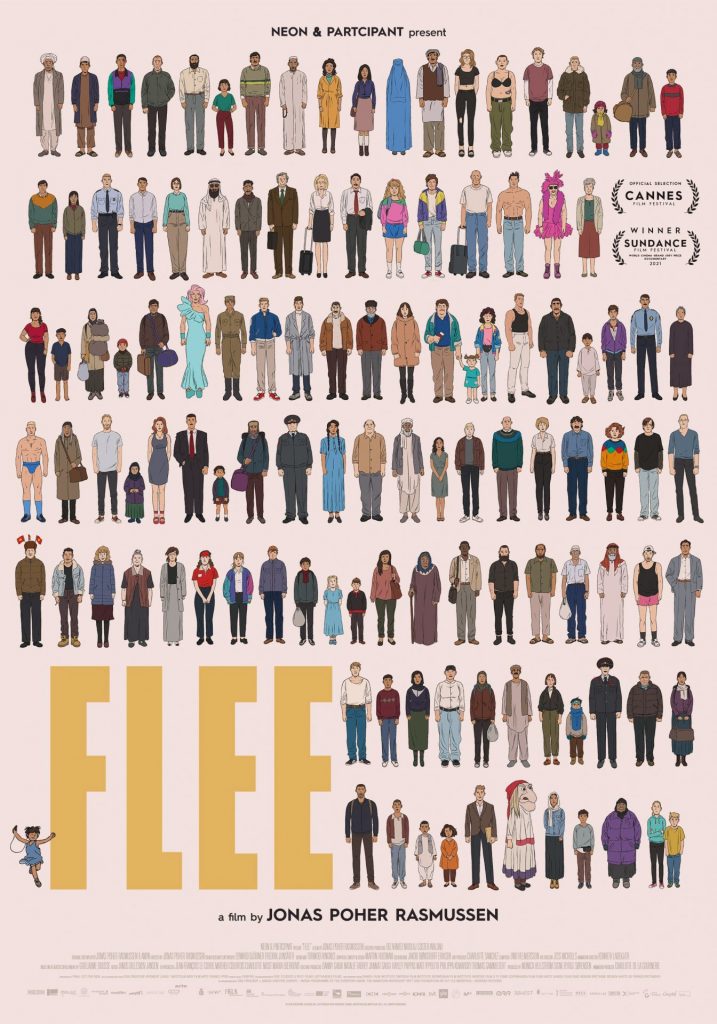
While I’m talking to Jonas over Zoom, I can see the film’s eye-catching poster behind him. He explains that it was one of the original sketches used to raise finance for the film, showing the sort of animation style they would use and featuring all the people who helped Amin on his way – it takes a chain of fortune and humanity to save a refugee, the poster suggests. You can even buy a copy of it on the Danish Refugee Council website, Jonas tells me, and profits will go to refugees.
The film, meanwhile, marches on, a story about flight going on a remarkable journey itself, starting at an animation festival in Annecy, France and going all the way to making history at the Oscars.
And now Flee has finally found a home in Oscars history, up the red carpet at the Royal Albert Hall for the Baftas and on to the Dolby Theatre at Hollywood & Highland in Los Angeles on March 27. I asked Jonas for a reaction to the triple nominations. He came back with this statement:
“We are so honoured and humbled by these three nominations for Flee. It is wonderful that Amin’s story has touched so many people and we hope it will continue to touch the hearts of audiences around the world. Thank you to Amin for his bravery in sharing his extraordinary journey and giving us the privilege to share it.”
Flee is in UK cinemas and on Curzon At Home.


